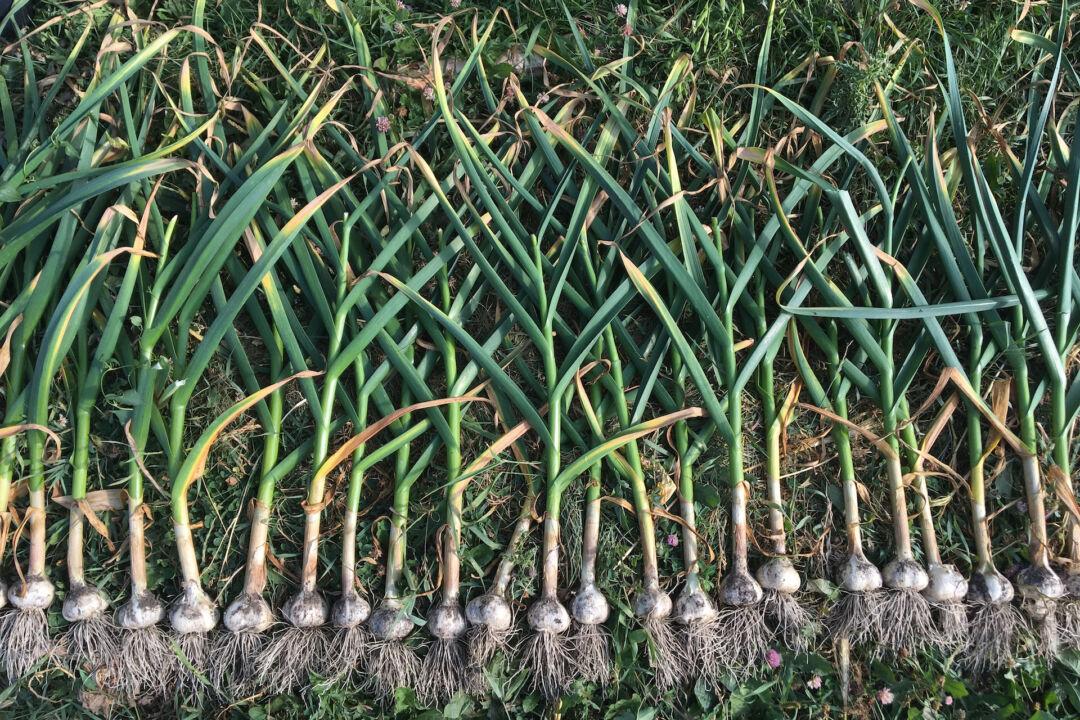Autumn is the time for winding down and relaxing, so they say. It’s when you are supposed to harvest the bounty of summer that you planted in spring, and sip your pumpkin spice lattes. This approach isn’t quite wrong, but it’s not the whole story. Fall is also a stealth time to get a head start on spring and start planting. This spring, when you’re waiting for the ground to thaw so it can be worked, my little plants already have roots.
Garlic is the poster child for fall-planted annual crops, because it refuses to grow any other way. If you wait until spring to plant your cloves, the resulting bulbs will be pitifully small. Greens like spinach, kale, radicchio, and other cold-tolerant varieties can benefit from fall planting as well.
When you sow your seeds—or plant your cloves—in the fall, you’re thinking like a plant, because they also plant their next generations in this season. Many plants will flower and make seeds toward the end of the summer. These seeds will drop to the ground, where some germinate into little plants. Most of these babies will die off in winter. But a few may survive, and others will germinate in spring. The same thing happens with fall-planted seeds. It’s a numbers game, and you have to play to win.
Planting fruit trees, on the other hand, is not a numbers game. You want them all to live. An apple tree will produce a lifetime of fruit, and you only have to plant it one time. So you’d better do a good job.
“You need to dig a $20 hole for a $2 tree,” advised my mother-in-law, years ago. In other words, don’t go buy a fancy tree and then slack off when it’s time to plant it. You’re better off with a cheap tree, planted properly. We took her advice to heart when we planted two very nice, not cheap red Macintosh trees one blustery fall day.
A fall-planted tree has time to acclimate to its new home at a leisurely pace, watered by the autumn rains, and again by the rain-soaked mud of March. But if you plant that same tree in spring, prepare for a stressful summer and lots of watering. You’ll need to work twice as hard for a tree that’s half as happy.
Those red Macs have lived happy, productive lives, and by this time of year, they blush dark red, with a piercing flavor that’s like an arms race between sweet and tart. I pull the best-looking fruit for eating. I process the rest into cider or apple sauce. And a precious few will be turned into apple Jack-o’-Lanterns, in honor of Halloween.
It’s like carving a really small pumpkin. Then I dehydrate it into something that resembles a shrunken head. Lemon or lime juice helps prevent the apple from turning brown, and gives a nice bit of tang to the flavor—if and when it comes time to eat your art.

Apple Jack-o’-Lanterns
If you live in a sunny climate, you can shrink apple heads on a windowsill in about a week. You can also use an oven on the lowest setting, or proximity to a heater. However, a dehydrator with shelving you can space widely enough to accommodate an entire apple is the device of choice for making these sweet and sassy skulls.- Apples, the bigger the better
- Lime or lemon juice
Next, carve the mouth; otherwise you might not have enough room below the eyes and nose. That is the extent of any artistic advice that I should be giving, other than to make sure the nose is smaller than the eyes.
Rub the carved apple with lemon or lime juice and place in the center of a dehydrator, with the temperature at 135 degrees F, for about 12 hours, until they have shrunk to your liking. If using an oven, set it on the lowest setting, with convection on if you’ve got it, and keep a watchful eye on them apples for about 2 to 6 hours.





